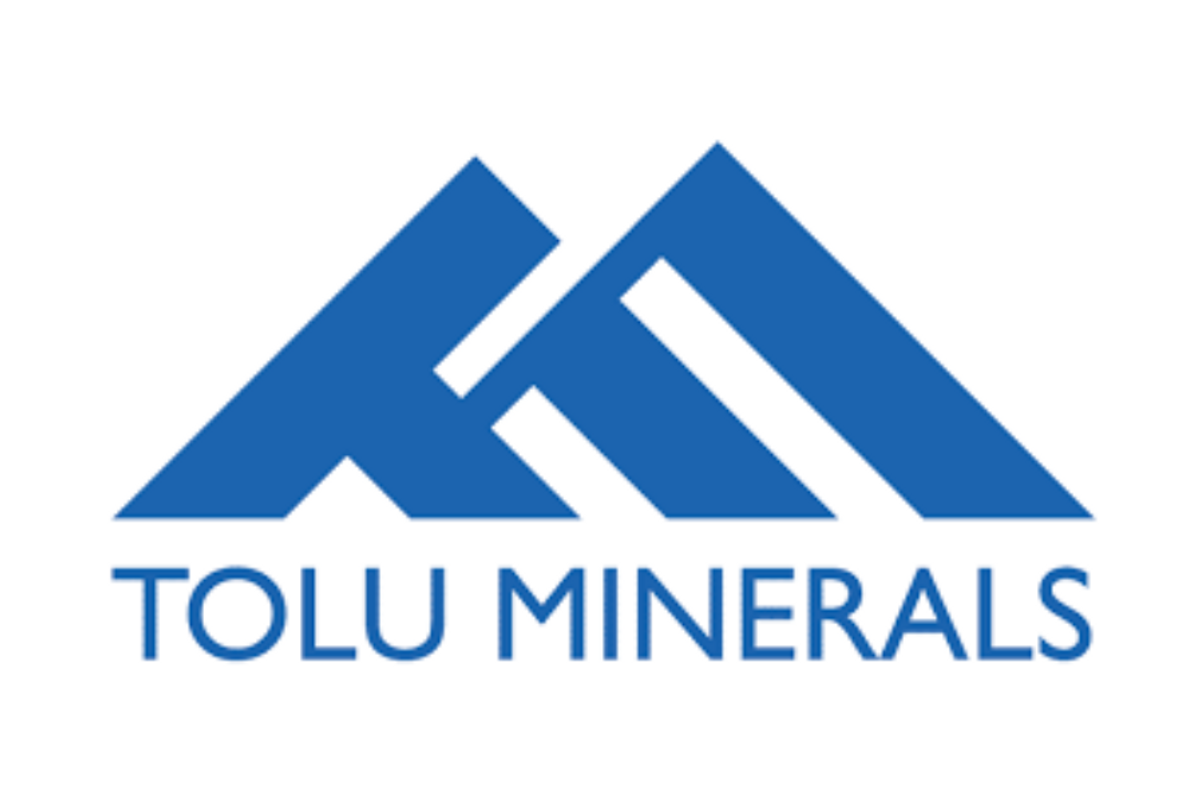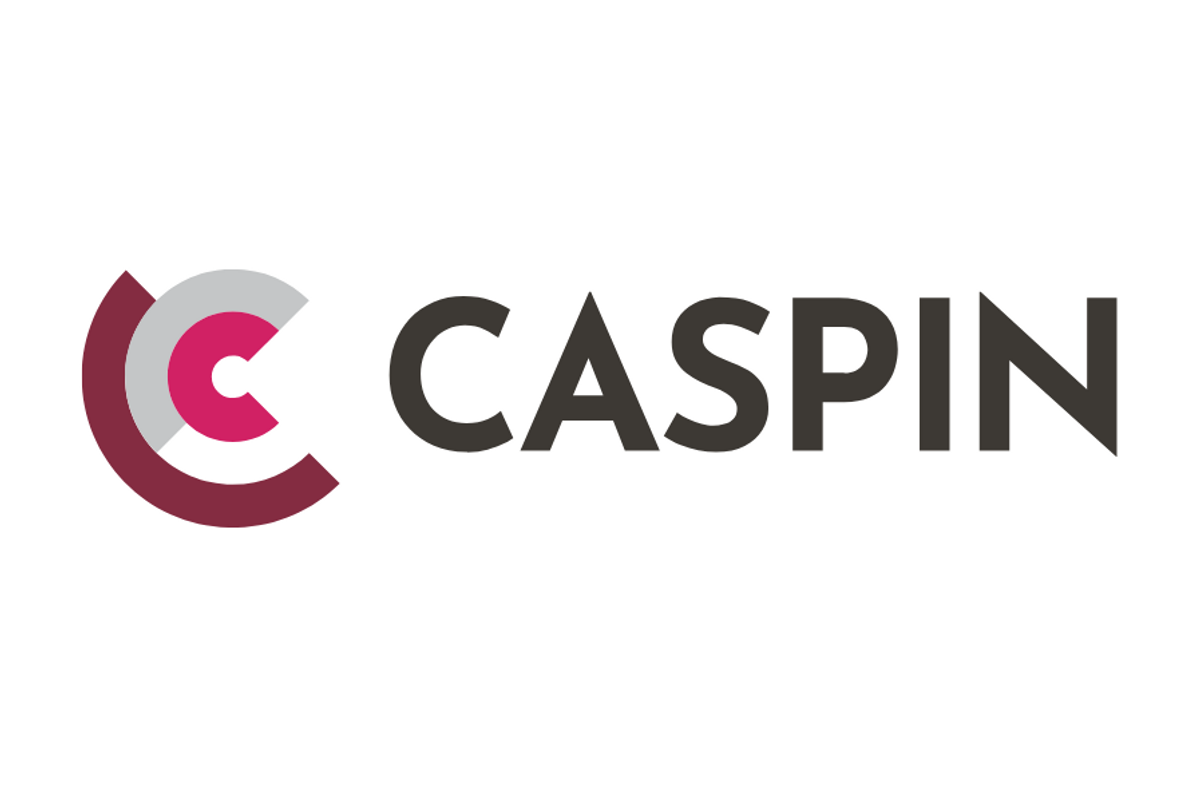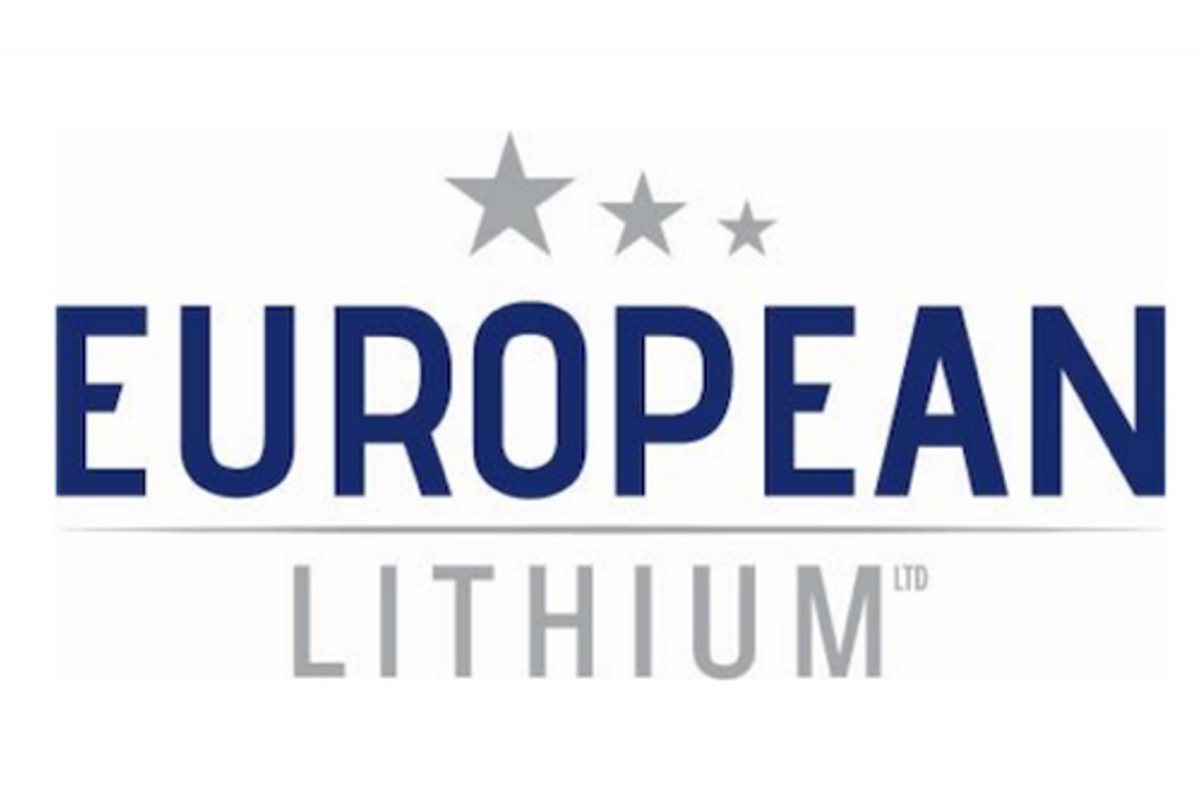
March 17, 2025
European Lithium Ltd (ASX: EUR, FRA:PF8, OTC: EULIF) (European Lithium or the Company) is pleased to publish for the first time, historical deep diamond drill holes DDH 7-14 drilled in 2007, and DX-01 drilled in 2010 from the Tanbreez Project in Greenland.
Highlights - Diamond Drill Hole Historical Results
Drill hole DX-01 was successfully drilled vertically to 338m from surface and intersected high - grade rare earths and oxides averaging:
- 4209.22ppm (0.42% TREO) (“including averaged heavy rare HREO of 24.45%”),
- 2.45% ZrO2 “zircon oxide” cut off at 0.5%,
- 73ppm Ta2O5 “tantalum pentoxide”,
- 1174.06ppm Nb2O5 “niobium pentoxide”,
- 266.45ppm HfO2 “hafnium oxide”,
- 103.03ppm Ga2O3 “gallium oxide”,
- Mineralisation average from surface to 338m downhole.
Diamond Drill hole Drilled DX-01 was drilled to 338m depth within the Hill Zone 22MT @ 0.38% REE Maiden Mineral Resource (13 March 2025 ASX Announcement 45MT @ 0.38% TREO).
Drill hole D7-14 was successfully angle drilled at 15⁰ east to 243m from surface and intersected high-grade rare earths mineralisation averaging:
- 4437.54ppm (0.44% TREO) (“including averaged heavy rare HREO of 28%”),
- 1.78% ZrO2 “zircon oxide” cut off at 0.5%,
- 83ppm Ta2O5 “tantalum pentoxide”,
- 1496ppm Nb2O5 “niobium pentoxide”,
- 351ppm HfO2 “hafnium oxide”,
- Ga2O3 “gallium oxide” was not assayed,
- Mineralisation average from surface to 243m downhole.
See drill hole collars Figure 1 and assay reports Appendix 1, 2 and 3.
European Lithium currently holds a 7.5% direct interest in the Tanbreez Project. By way of background, European Lithium first acquired a 5% interest in Tanbreez Mining Greenland A/S (Tanbreez) on 3 October 2022 and acquired a further 2.5% interest in Tanbreez on 6 February 2023 from the privately owned Australian company Rimbal Pty Ltd (Rimbal). At this time, the investment of 7.5% in Tanbreez was not considered material to the Company and as such the historical drill hole data and results was not disclosed at the time of acquiring an interest in Tanbreez. In June 2024, Critical Metals Corp. (NASDAQ: CRML) entered into the Heads of Agreement with Rimbal to acquire up to 92.5% in Tanbreez and have completed the initial investment and stage 1 interest to hold a 42.0% interest in Tanbreez. As of the date of this announcement, European Lithium and CMC hold a combined interest of 49.5% in Tanbreez. European Lithium is CMC’s largest shareholder and as such now considers the Tanbreez Project to be material and as a result is announcing historical data and information in this announcement.The Company recently announced its Maiden Mineral Resource Estimate (MRE) for the Tanbreez Project of 45MT containing 0.38% TREO including 27% contained HREO plus rare metal oxides (see ASX Announcement 13 March 2025).
The Company is awaiting assay results from the September-November 2024 confirmation drilling program comprised of sixteen holes, with the first hole A1-24 reported January 2025, and will publish the remaining 15 diamond drill hole assay results when they become available.
The drilling results from A1-24 drilled 2024 (ASX Announcement 20 January 2025) confirmed a significant 40m deep intersection from outcropping surface mineralisation of high-grade rare-earth oxide averaging:
- 4,722.51ppm (0.47%TREO) (including 26.96% averaged heavy rare earth (” HREO”),
- 1.82% ZrO2 “zircon oxide”,
- 130.92ppm Ta2O “tantalum pentoxide”,
- 1852.22ppm Nb2O5 “niobium pentoxide”,
- 393.68ppm HfO2 “hafnium oxide”,
- 101.67ppm Ga2O3 “gallium oxide”.
The assay results from historical deep diamond drill holes DX-01 and D07-14 (that were drilled by Rimbal P/L in May 2007 and 2010) confirm similar average grades to drill hole A1-24
Commenting on the assay results, Tony Sage, Executive Chairman of the Company, said:
”It’s exciting to report on the outstanding assay results from historical deep drilling which may confirm high-grade, high tonnage potential that extends a lot deeper than was originally expected for the Tanbreez Project”
“After recently announcing the MRE of ~45MT of REE’S @ 0.38% and other rare earth metals, the highly experienced team we have recently assembled, is moving quickly to measure the true potential of the Tanbreez Project that is also gaining significant interest from Western Governments.
“The team is now working through more of the historical data (which contains over 400 holes and 3cc,000 samples) of which most have never been made public. Some of this data is over 22 years old, so by using modern technology to decipher the $45 million of expenditure spent by Greg Barnes, it will add significant value to Tanbreez Project’s long term success”
Click here for the full ASX Release
This article includes content from European Lithium, licensed for the purpose of publishing on Investing News Australia. This article does not constitute financial product advice. It is your responsibility to perform proper due diligence before acting upon any information provided here. Please refer to our full disclaimer here.
EUR:AU

Sign up to get your FREE
European Lithium Investor Kit
and hear about exciting investment opportunities.
- Corporate info
- Insights
- Growth strategies
- Upcoming projects
GET YOUR FREE INVESTOR KIT
The Conversation (0)
07 September 2023
European Lithium
Overview
As the global push to halt climate change gains momentum, the European Commission is looking to regionalize the battery supply chain to capitalize on the rapid electric vehicle (EV) growth and limit its dependency on other countries through heavy investment and policy changes. Europe’s electric vehicle market value reached US$29.49 million in 2021 and is projected to increase up to US$143.08 million by 2027, indicating a compounded annual growth rate of 23.4 percent in that period.
Even though Europe is one of the largest global producers of motor vehicles, it currently does not have a local supply of lithium hydroxide which is heavily used in EV battery technology. According to experts, the market is set to remain in a structural shortage until 2025
One company that aims to become the first local lithium supplier into an integrated European battery supply chain is European Lithium (ASX:EUR,FRA:PF8), a mining exploration and development company focused on exploring, identifying and acquiring lithium in Europe. The company is led by a management team with decades of experience and success in the mining and finance markets.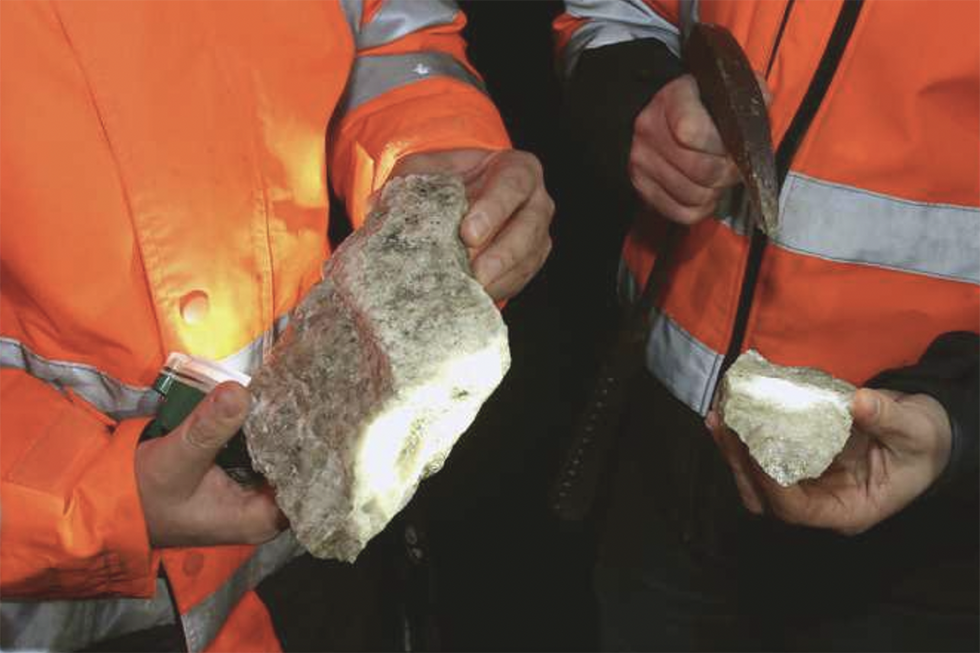
“Our aim is to be the first supplier of lithium from Europe, for Europe,” European Lithium chairman Tony Sage said.
The company is focused on its wholly owned Wolfsberg Lithium project located in Carinthia, Austria. The pre-existing mine is located in a mining-friendly region with multiple mineral discoveries in the surrounding area. The property features a high-grade lithium resource at an average grade of one percent lithium hydroxide, with a total resource of 12.88 million tonnes based on resources measured, indicated and inferred in zone 1 only.
The Wolfsberg Lithium project resource has the potential to double based on positive drill results in another zone on the property.
Based on the definitive feasibility study (DFS) released in March 2023, Wolfsberg Lithium Project is well positioned to become a leading producer of battery-grade lithium hydroxide in Europe. It is set to deliver high returns, leveraging low operating costs, and benefiting from a lithium market that is anticipated to be in structural undersupply during most of the life of mine. The battery-grade lithium hydroxide monohydrate (LHM) prices modeled in the DFS are projected to be at a 39-percent discount to current spot prices in 2025 and then escalate by 2 percent per annum. The estimated capex is US$866 million which supports a post-tax NPV of US$1.5 billion.
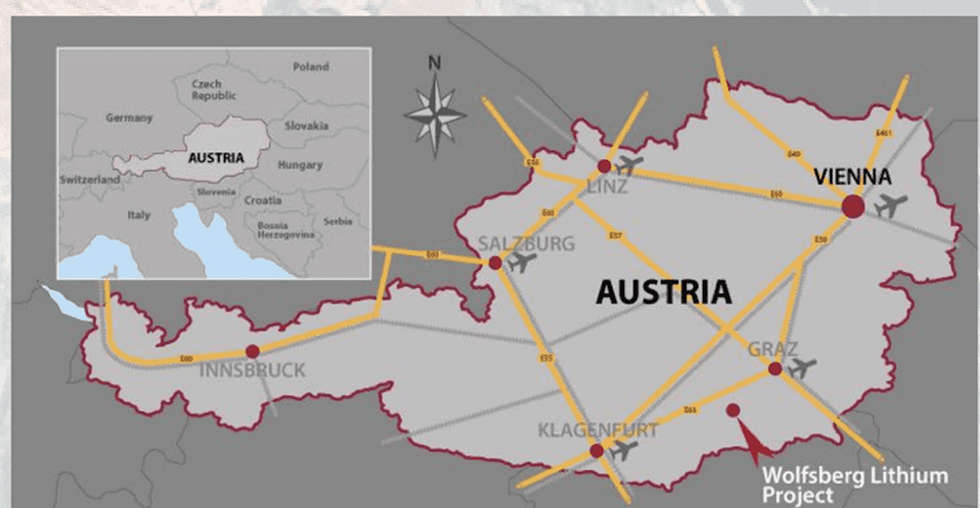
European Lithium has established several strategic relationships with an aim to deliver value to the Wolfsberg Lithium Project through development and during production. This includes a partnership with KMI for liaising with Austrian authorities.
The company commissioned Dorfner Anzaplan to construct the pilot plant, which was successfully completed on schedule. Anzaplan has also overseen the completion of metallurgical test work on bulk ore extractions. Testing will allow significantly higher recovery rates at the start of production as opposed to only assessing metallurgical data from the core as other mining companies often do, giving European Lithium the advantage of a streamline refinement process.
The company has support from the European Battery Alliance, GREENPEG and other government initiatives, believing it has the potential to become a major, first-to-market producer of lithium in Europe. The company also remains committed to clean production in an effort to support sustainability.
Based on the DFS, the company plans to begin the permitting process of its Wolfsberg Lithium project and prepare the mining plan for the mining authority to authorize the mine and concentrator construction. Afterward, the company will determine the approval requirements of the carbonate hydroxide conversion plant with the Energy Information Administration (EIA) and then initiate the final financing plan.
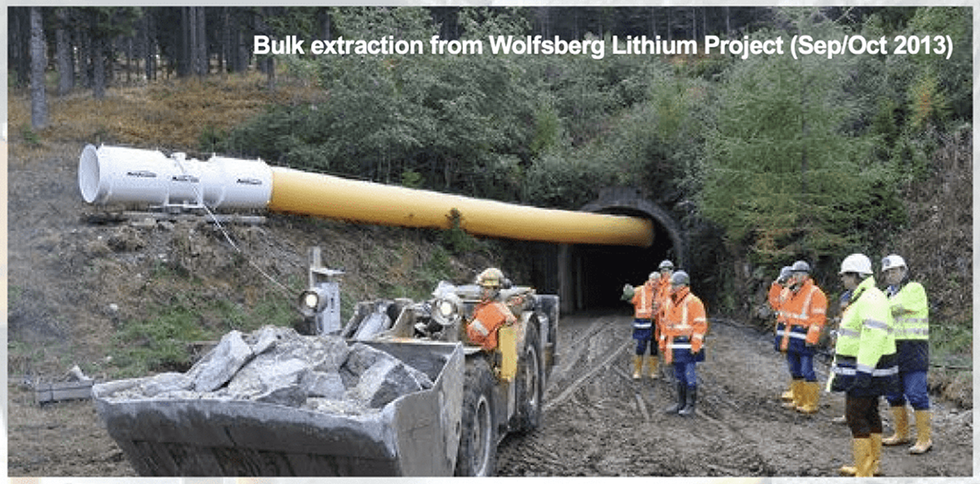
European Lithium, through its wholly owned Austrian subsidiary ECM Lithium Aľ GmbH (ECM), signed a binding long-term lithium offtake agreement with top-tier European auto manufacturer BMW to secure the company’s first offtake of battery grade lithium hydroxide from its Wolfsberg Lithium Project in Austria.
The company is aiming to commence production of lithium hydroxide from the project in 2027 — subject to funding and approvals by the Austrian government.
In a bid to expand its project portfolio, European Lithium executed a binding Heads of Agreement with 2743718 Ontario Inc., a subsidiary of Richmond Minerals (TSXVRMD), to acquire 100 percent of the rights, title and interest in the Bretstein-Lachtal Project, Klementkogel Project and the Wildbachgraben Project, a group of exploration licenses covering 114.6 square kilometers, targeting lithium with known occurrences in the Styria mining district of Austria.Company Highlights
- European Lithium is a mining exploration and development company focused on exploring, identifying and acquiring lithium in Europe.
- The company aims to become the first local lithium supplier into an integrated European battery supply chain.
- The company’s focus is on its wholly owned advanced Wolfsberg Lithium Project (Wolfsberg) located in Carinthia, Austria.
- Wolfsberg is a high-grade lithium resource at an average grade of one percent lithium oxide, with a total resource of 12.88 million tonnes based on measured, indicated and inferred resources in zone one only.
- Wolfsberg’s definitive feasibility study results demonstrate potential to deliver high returns, leveraging low operating costs, and benefiting from a lithium market that is anticipated to be in structural undersupply during most of the life of mine.
- The Wolfsberg resource estimate has significant upside with the potential to double based on positive drill results.
- Through its wholly owned Austrian subsidiary ECM Lithium Aľ GmbH (ECM), European Lithium signed a binding long-term lithium offtake agreement with top-tier European auto manufacturer BMW AG (BMW) to secure the company’s first offtake of battery-grade lithium hydroxide from Wolfsberg.
- The company has signed a binding agreement to build a Saudi Arabia-based hydroxide processing plant in partnership with Obeikan and deliver significant cost savings.
- The company is led by a management team with decades of experience and success in the mining and finance markets.
- European Lithium entered into a business combination agreement with Sizzle Acquisition, a US special purpose acquisition company, to which European Lithium will sell down its interest in its wholly owned Wolfsberg Lithium Project (Wolfsberg and Wolfsberg Lithium Project) and merge with Sizzle via a newly formed, lithium exploration and development company named, Critical Metals Corp.
- European Lithium has acquired 100 percent of the rights, title and interest in the Bretstein-Lachtal Project, Klementkogel Project and the Wildbachgraben Project, a group of exploration licenses covering 114.6 square kilometers, targeting lithium with known occurrences in the Styria mining district of Austria and nearby the Wolfsberg Lithium Project
- The company received high-grade lithium assays from sampling undertaken at various prospects within the Eastern Alps Lithium Satellite Projects, located in Austria, which are held 20 percent by European Lithium and 80 percent by EV Resources Limited (ASX: EVR).
Get access to more exclusive Lithium Investing Stock profiles here
Keep reading...Show less
Developing the Advanced Wolfsberg Lithium Deposit in Austria
25 June
EUR Sells 2m CRML Shares for U$5m (A$7.8m)
18 June
CRML secures US$120M LOI for development of Tanbreez Project
European Lithium (EUR:AU) has announced CRML secures US$120M LOI for development of Tanbreez Project
10 June
Outstanding High Grade REE Diamond Drill Results
29 May
Update to Tanbreez Scoping Study to Include Addendum to MRE
03 July
Trump and Vietnam Strike Tariff Deal, Last-Minute Agreement Spares Harsher Rate
US President Donald Trump announced Wednesday (July 2) that the United States and Vietnam struck a trade deal just a week before the July 9 deadline.
The agreement will see the US impose a 20 percent tariff on many Vietnamese exports, meaning Vietnam averted the threatened 46 percent levy. Additionally, transshipped goods, which are goods routed through Vietnam before being shipped to the US, will be subject to a 40 percent tariff. In his post, Trump said Vietnam agreed to allow the import of US goods at a 0 percent tariff in return.
The last-minute framework gives Washington a political win while preserving Vietnam’s vital access to its largest export market. Vietnam is America’s 10th biggest trading partner, and the US is by far its most important destination for manufactured goods.
However, details remain thin. It is still unclear exactly which products will fall under the 20 percent tariff, or how the 40 percent penalties on transshipped goods will be enforced.
While Vietnam’s state media did not confirm those tariff levels in its official statement, it said the two countries"Vietnam - US joint statement concerning a fair and balanced reciprocal trade agreement framework."
The timing of the deal is also critical. Under Trump’s April-announced plan, tariffs on Vietnamese goods were due to rise to 46 percent, alarming businesses that have shifted manufacturing from China to Vietnam over the past five years.
Since 2018, Vietnam’s exports to the United States have nearly tripled, climbing from US$49.14 billion to US$136.5 billion last year, according to US Census Bureau data. American exports to Vietnam, meanwhile, rose about 30 percent to US$13.04 billion in the same period.
For Trump, the agreement with Vietnam is an important success as he races to conclude similar frameworks with other trading partners before the broader tariff hikes resume next week.
Talks with India are underway, while negotiations with Japan and the European Union have encountered complications.
Analysts say the Vietnam deal could set the tone for these upcoming talks, as Vietnam's dependence on US trade meant it had a weak negotiation position. “Other countries will feel they should be able to lock in a lower tariff rate than the 20 percent that President Trump says Vietnam has agreed to,” Mark Williams, chief Asia economist at Capital Economics, told CNBC.
Murray Hiebert of the Center for Strategic and International Studies meanwhile noted that had Trump insisted on the full 46 percent tariff, Vietnam risked losing out to other Southeast Asian rivals, damaging both its economic prospects and its willingness to partner with Washington.
“Had Trump stuck with 46 percent, much higher than the current tariff on China, Vietnam feared it would be disadvantaged by its competitors especially in Southeast Asia,” Hiebert told Reuters. “This likely would have dented Vietnam's trust in the US and it might have toned down some of its security cooperation with Washington.”
A new front in Washington’s push to isolate China
The framework with Vietnam also highlights how the US is using its trade leverage to pressure Asian countries to help block Chinese manufacturers from evading existing tariffs.
The 40 percent penalty on transshipped goods is designed to discourage companies from routing Chinese products through Vietnam to bypass American duties.
Trump’s team is applying similar demands on other nations such as Thailand and Indonesia, respectively urging them to monitor foreign investment and reduce the amount of Chinese content in their manufactured exports if they hope to avoid higher tariffs.
But enforcement of these new transshipment rules will be challenging. Many Southeast Asian customs authorities lack the resources to fully verify the complex origins of manufactured goods.
In the case of the Vietnam deal, it's still unclear if the 40 percent levy on transshipped goods will also be applied to Vietnam-made goods utilizing Chinese components, and if so what the acceptable percentage would be.
Experts warned that strict penalties of this sort could push US companies producing goods in Vietnam to leave the country altogether, or even shift production back to China if it becomes cheaper.
“If it’s too onerous or difficult to comply, companies won’t use the opportunity to grow sourcing in Vietnam,” Matt Priest, head of the trade group Footwear Distributors and Retailers of America, told the New York Times. “They may even head back to China if it’s price competitive.”
Vietnam itself faces a delicate balancing act. The country has benefited from billions of dollars of Chinese investment in its export sectors — especially textiles, electronics and automotive — while at the same time strengthening its security ties with the United States to counter China’s growing assertiveness in the South China Sea.
Neighboring countries are watching carefully. Thailand, for example, has estimated that stricter rules on transshipment could reduce its US exports by US$15 billion, nearly a third of its trade surplus with America last year. Authorities in Malaysia and Indonesia have already begun tightening their own export verification procedures ahead of any agreements with the US.
He Yongqian, a spokesperson for China's Ministry of Commerce, commented on the US-Vietnam agreement Thursday in a press briefing, Bloomberg reported.
"We’re happy to see all parties resolve trade conflicts with the US through equal negotiations, but firmly oppose any party striking a deal at the expense of China’s interests," she stated. "If such a situation arises, China will firmly strike back to protect its own legitimate rights and interests."
Don’t forget to follow us @INN_Resource for real-time updates!
Securities Disclosure: I, Giann Liguid, hold no direct investment interest in any company mentioned in this article.
Keep reading...Show less
26 June
Drilling Commences at the Kanowna East Gold Project
Accelerate Resources Limited (“AX8”, “Accelerate” or the “Company”) is pleased to announce that drilling has commenced at its 70%-owned Kanowna East Gold Project, located 25km northeast of Kalgoorlie, WA (Figure 1).
Key Points
- High impact drilling has commenced at Kanowna East, targeting basement gold systems at the Western Tiger and Little Lake Prospects, only 25kms NE of Kalgoorlie.
- Program designed to test prospective structural settings and alteration zones along the Reidy Fault and newly recognised northeast gravity trends.
- Targeting the potential source of widespread paleochannel gold occurrences identified from historical drilling.
- Strong cash position of ~$3 million ensures a well-funded campaign and supports strategic exploration momentum.
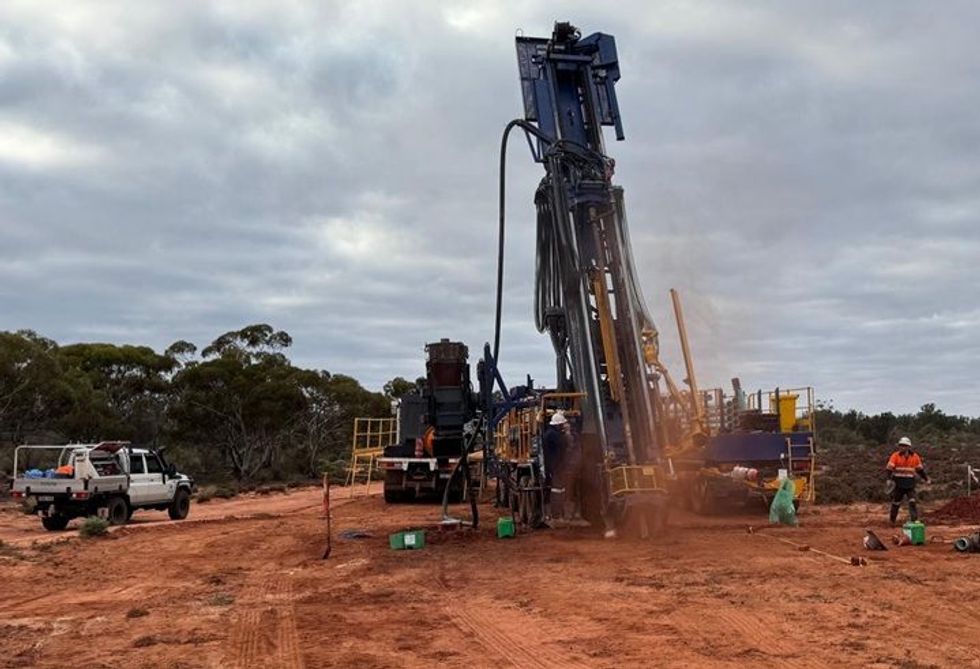
The 2,000m reverse circulation (RC) program is testing structurally controlled, basement- hosted gold targets at the Western Tiger and Little Lake Prospects (Figure 2). These targets have been selected based on structural complexity, geophysical modelling, and geochemical signatures indicative of gold-bearing systems.
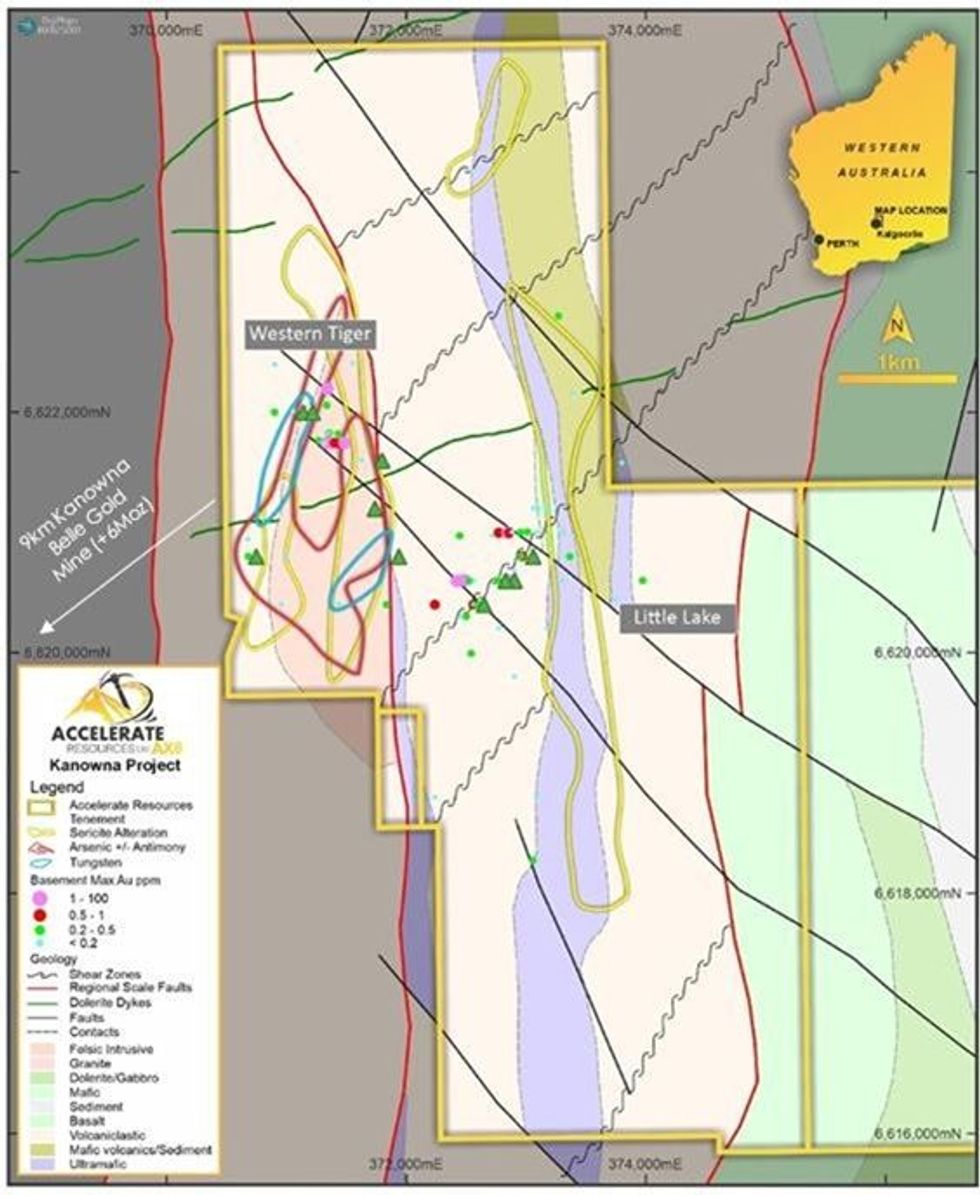
At Western Tiger, drilling is focused on the undrilled western margin of a felsic intrusive unit interpreted to have been emplaced along the Reidy Fault. Sericite alteration, arsenic- antimony pathfinder anomalies, and recent structural reinterpretations highlight the area as a priority for potential gold discovery.
At Little Lake, newly processed gravity data has defined northeast-trending features interpreted to intersect northwest fault systems—structural zones commonly associated with gold mineralisation in the Kalgoorlie district. These trends correlate with previously intercepted basement-hosted gold and offer a compelling test of the Company’s exploration model.
“Commencing drilling at Kanowna East marks an important milestone in Accelerate’s gold strategy,” commented Chief Executive Officer Luke Meter. “We’re testing targets with geological signatures consistent with major orogenic gold systems in the Eastern Goldfields and success could substantially enhance the value of our gold portfolio near Kalgoorlie.”
With a strong financial position, Accelerate remains well-funded to execute its exploration strategy across multiple growth-stage gold assets in WA.
The Company looks forward to updating shareholders as drilling progresses and assays become available.
Click here for the full ASX Release
This article includes content from Accelerate Resources Limited, licensed for the purpose of publishing on Investing News Australia. This article does not constitute financial product advice. It is your responsibility to perform proper due diligence before acting upon any information provided here. Please refer to our full disclaimer here.
Keep reading...Show less
24 June
Australia’s 5 Most Valuable Mineral Exports
Australia’s economy is largely based on its natural resources, with the minerals sector making the greatest contribution to the nation’s exports at 58.7 percent as of May 2025.
Australia's mining industry isn't limited to one or two states, either. Five of Australia’s states and territories rank in the top 20 mining jurisdictions in the world for investment attractiveness, according to the Fraser Institute’s 2023 annual survey of mining companies: Western Australia (fourth), the Northern Territory (8th), Queensland (13th) and South Australia (19th).
These mining jurisdictions demonstrate a high level of investment attractiveness mainly due to their mineral-rich geology, solid infrastructure, stellar economic environment and government support for the resources industry at both the federal and state level.
Australia exports a wide range of important mineral resources, including precious metal gold, base metals such as copper, iron ore, aluminum and nickel, and energy resources oil, natural gas and coal. In recent years, lithium has also become a major mineral export for Australia.
During the 2023/2024 period, Australia's mineral exports reached AU$415 billion, according to the Department of Industry, Science and Resources (DISR), which is forecasting a decline to AU$387 billion for 2024/2025.
"Modest global economic growth is expected over the outlook period, as lower inflation allows some central banks to make further small cuts in official interest rates," the department's March 2025 Resources and Energy Quarterly stated. "Trade actions and retaliatory measures will likely detract from global growth and may further geopolitical tensions ... In volume terms, most of Australia’s resource exports are likely to show a modest pick up through the outlook period."
Export Finance Australia highlights that in March 2025 the Organisation for Economic Co-operation and Development (OECD) downgraded its global growth forecast to 3.1 percent for 2025 and 3 percent for 2026 on uncertainty over trade and stickier than expected inflation.
However, there is a silver lining for Australia, as the nation's "diversified export profile ensures (its) GDP is relatively less dependent on US exports."
Australia's top mineral resources
But what are Australia's top mineral resources by export value? Read on for a breakdown of Australia's five most valuable natural mineral resource exports, iron ore, liquified natural gas, coal, gold and copper.
Combined, the country's mineral exports accounted for two thirds of Australia’s merchandise export earnings in the 2023/2024 financial year, as per the data from the Department of Industry, Science and Resources. Prices are reported as real export values using 2024/2025 commodity prices.
1. Iron ore
According to the DISR's data for 2023/2024, iron ore accounted for AU$141 billion of Australia's export value during that period.
As the world’s largest producer and exporter of iron ore, Australia is the king of the iron game. US Geological Survey (USGS) information shows that Australia produced 930 million metric tons of iron ore in 2024, accounting for 37.2 percent of global production.
Iron is used in everything from infrastructure to transportation to advanced technology, meaning Australia and its many iron ore mines in Western Australia have enjoyed a mighty run of economic prosperity as China has leaned into its push for industrialization.
As for future iron ore export value, the metal is forecast to bring in AU$117 billion for 2024/2025. Looking further out, weaker demand out of China and globally is likely to dampen demand for iron ore going forward, which led the department to project iron ore export value of AU$81 billion for the 2029/2030 financial period.
2. Liquified natural gas
Liquified natural gas (LNG) is Australia’s second most valuable resource export, earning more than AU$70 billion for the economy in the 2023/2024 financial period. The DISR expects this figure to jump to AU$72 billion in 2024/2025.
The island continent is home to 14 different basins that yield natural gas. The country has significant natural gas reserves, with much of it locked up in coal seams that require unconventional drilling. Most of Australia’s natural gas production occurs offshore in the northwest, which has seen an increase in large development projects over the past few years.
Moving forward, several factors are expected to place downward pressure on Australia's LNG export values, including less production from maturing wells alongside a drop in investment; declining use of natural gas as an energy source in favour of renewables; lower natural gas prices; and the rising prominence of US LNG in the global export market. All in, the department projects the value of Australia's LNG exports will fall to AU$45 billion in the 2029/2030 financial period.
3. Coal
While more western nations around the world are turning away from coal, in Australia, the sooty black rock is a source of incredible wealth. In terms of Australia’s resource and energy exports, during the 2023/2024 financial period metallurgical coal and thermal coal accounted for an export value of AU$56 billion and AU$38 billion, respectively.
Australia hosts coal deposits across the country, with a number of new mines under construction and expansion projects underway. However, softer demand for coal going forward is likely to result in a significant decrease in Australia's coal exports over the coming years as the transition to renewable energy continues and financing for new coal projects dries up.
During the 2024/2025 period, export values for metallurgical and thermal coal are expected to drop to AU$41 billion and AU$33 billion, respectively, and fall even further by 2029/2030 to AU$33 billion and AU$22 billion.
4. Gold
Australia's gold exports in 2023/2024 are valued at AU$34 billion, making gold Australia's fourth most valuable mineral export. The Department of Industry, Science and Resources expects this figure to rise to AU$36 billion for 2024/2025, before falling to a projected AU$30 billion by 2029/2030.
According to the USGS, Australia produced 290 tonnes of gold in 2024, only behind China and Russia for the top gold-producing countries.
Much of Australia’s wealth is founded on gold, with a number of gold rushes triggered in the mid-1800s that supercharged the nation’s development and set it down its path of prosperity through mining. Today, most of Australia's top-producing gold mines in the country are located in Western Australia.
5. Copper
Copper comes in as the fifth most valuable mineral export from Australia, earning AU$12 billion in 2023/2024. Australia is the world's eighth largest producer of the red metal, putting out 800,000 MT of copper in 2024, and hosts the third largest copper reserves at a JORC-compliant 100 million MT.
Most of Australia's copper resources are located in South Australia, home to the largest single copper mine in the country: the Olympic Dam polymetallic mine, owned by BHP (ASX:BHP,LSE:BHP,NYSE:BHP). The state of Queensland is also a hotbed of copper activity with at least a dozen operating mines, including Australia's second largest copper producer, Glencore’s (LSE:GLEN,OTC Pink:GLCNF) Mount Isa Mines complex.
Looking forward, for the 2024/2025 period, the Department of Industry, Science and Resources is forecasting AU$15 billion in export value for copper, and projecting that figure to come in at AU$18 billion in 2029/2030.
This growth is expected to come via rising demand for copper globally spurring increased production and exploration spending in the country resulting in a robust copper export market for Australia.
Other mineral resources
While the five resources above represent the most valuable mineral exports to the Australian economy, the country sits on significant reserves of almost every mineral you can find on the planet. Other major commodities of significant value to the Australian economy are oil, lithium, aluminum, oil, nickel and zinc.
Lithium as a mineral export from Australia earned AU$10.25 billion in 2023/2024. The country is the world's largest producer of the energy metal, putting out 88,000 MT of lithium in 2024, and hosts the second largest lithium reserves at 7 million MT. Most of Australia's lithium resources are located in Western Australia.
Looking forward, for the 2024/2025 period, the Department of Industry, Science and Resources is forecasting AU$5.2 billion in export value for lithium, and projecting that figure to come in at AU$9.2 billion in 2028/2029.
Wondering where uranium and rare earths are on this list? Despite having 28 percent of the world’s reserves, uranium export value came in at only AU$1.2 billion for the 2023/2024 period despite the country having three mines producing uranium — Four Mile, Olympic Dam and Honeymoon — although Honeymoon just re-entered production in April 2024. As uranium demand increases and new mine supply comes online, exports are projected to jump to AU$1.41 billion in 2024/2025 and AU$1.7 billion by 2029/2030.
While Australia also ranks as the fourth largest producer of rare earths globally, rare earths production did not rate as a major contributor to the Australian economy. However, the country's first rare earths refinery, Lynas Rare Earths' (ASX:LYC) Kalgoorlie processing facility is just getting started, and Iluka Resources' (ASX:ILU) Eneabba rare earths refinery is slated to come online in the next few years. This has the DISR forecasting rare earths exports reaching a range between AU$1.3 billion and AU$3.7 billion in 2029/2030.
This is an updated version of an article first published by the Investing News Network in 2019.
Don’t forget to follow us @INN_Resource for real-time updates!
Securities Disclosure: I, Melissa Pistilli, hold no direct investment interest in any company mentioned in this article.
Keep reading...Show less
24 June
AU$15 million Exploration over 10km Strike Length Tolukuma Gold Mineralised Corridor
Tolu Minerals Limited (“Tolu”) is pleased to announce the commencement of its first major exploration program that includes
- An expansive surface geological mapping, trench sampling and multi-element surface geochemical survey covering existing gold prospects (Figure 2) and targets from the recently completed Airborne Magneto Telluric (“Airborne MT” or “MT”) geophysical survey; and
- A targeted 30,000m of diamond drilling both on surface and underground.
The objective of the program is:
- To grow the existing MRE (Table 1) focussing on targets on the mining lease, ML104 and targets immediately adjacent to ML104 that can provide ore to the existing infrastructure;
- To test selected regional targets to demonstrate the regional scale potential within the broader Tolukuma structure; and
- To test the potential of Tolu’s “remote projects” namely Mt Penck on New Britain island and Ipi River Northwest of Tolukuma.
HIGHLIGHTS:
- Seven diamond drill rigs to be deployed at surface and underground targeting significant expansion of the Mineral Resource Estimate
- Focusing on new discoveries provided by the recent Airborne MT survey and geochemical data
- Surface exploration and drilling expansion along the 10km strike length of the Tolukuma gold mineralised corridor
- Pursuing the discovery of additional resources from historical epithermal gold prospects including at Mt. Sen, Kimono, 120 vein, Kunda North, Miliahamba, Taula and Duma-Dilava
- All areas have strong indications of potential significant mineralisation of Au, Ag and Cu gained from the in depth Airborne MT, field studies and geophysics gained from historical data, last 18 month’s programs and detailed analysis
- AU$15 million intensive exploration program in high ranked targets near mine
Iain Macpherson, MD & CEO of Tolu Minerals Ltd. (“Tolu”) said:
“I’m pleased to report that Tolu has commenced the next major exploration phase that is focussed on expanding the existing Mineral Resource Estimate (“MRE”), with a view to not only growing the production rate and extending the Life of Mine, but also targeting more projects within the Company’s portfolio.
Having recently successfully completed a further round of accelerator capital, Tolu is well positioned to systematically follow up on targets generated by the recent Airborne MT coupled with historical data. The Company have intensified the existing geochemical exploration program that, by complementing the Airborne MT, is providing a number of drill ready targets that are being ranked for diamond drilling.
Having placed an order for an additional 5 diamond drill rigs (3 surface and 2 underground rigs) to complement the Company’s existing surface and underground diamond drill rigs and to deploy the new rigs in Q3 and Q4 this year, targeting in excess of 30,000m of drilling during 2025 and 2026.
This substantial program is designed to expedite the generation of a very large MRE for continued and scaled up gold production and also to demonstrate the potential for regional development on both epithermal and porphyry targets.
A surface geological mapping, trenching and multi-element geochemical sampling program is currently underway to test for gold mineralisation continuity along the 10km strike extent of the Tolukuma gold mineralised corridor along ML104 between Mt. Sen to the North and Duma-Dilava to the South and will be expanded East and West to investigate parallel structures such as Kimono to the East and Karame and Idave to the West
The significant targets to the East and West are believed to be replications and extensions of the Tolukuma structure
The immediate short-term priority is to expand on the current MRE for ongoing gold production. Tolu’s own diamond drilling rig and drilling team are continuing to test for near surface mineralisation at the Zine and 120 veins and significant results are planned to be fire assayed and released as soon as practicable”.
“This is an exceptionally exciting time for Tolu Minerals,” says Chris Muller, Executive Group Geologist. “Tolukuma stands out as one of the most remarkable projects in the country, boasting among the highest gold grades nationwide. The imminent procurement and commissioning of five brand-new drill rigs, set to enhance our existing fleet, will be instrumental in significantly expanding our resource base over the next 12 months. These rigs will not only drive growth of the known resource, but also unlock the potential of numerous untested vein targets. In parallel, we are launching an extensive geological mapping and geochemical sampling campaign across the 20km² vein field marked by widespread gold occurrences. This integrated exploration strategy positions us for transformational discovery and growth.”
Click here for the full ASX Release
This article includes content from Tolu Minerals Limited, licensed for the purpose of publishing on Investing News Australia. This article does not constitute financial product advice. It is your responsibility to perform proper due diligence before acting upon any information provided here. Please refer to our full disclaimer here.
Keep reading...Show less
19 June
Ericsson, Rogers Launch Canada’s First Underground 5G Network for Smart Mining
Ericsson (NASDAQ:ERIC) and Rogers Communications (NYSE:RCI) have activated Canada’s first underground private 5G network at the Northern Center for Advanced Technology's (NORCAT) Sudbury mine.
The move is part of a bid to transform traditional mining operations with cutting-edge connectivity.
At the heart of this innovation is the Ericsson Private 5G system, which the company says delivers seamless, high-performance, low-latency coverage from the surface to depths of more than a mile.
Built on Ericsson’s EP5G technology and integrated with Rogers’ private network expertise, the setup is designed for smart mining applications that Wi‑Fi cannot adequately support. These include autonomous haul trucks, remote-controlled drilling rigs, environmental monitoring sensors and real-time asset tracking.
"The NORCAT Underground Centre provides an extraordinary platform for companies worldwide to showcase their cutting-edge technologies in a real operating mine, shaping the future of the mining industry," said NORCAT CEO Don Duval in a Thursday (June 19) press release, calling it an "ecosystem like no other in the world."
Duval also emphasized the importance of collaboration in making sustainable impacts in mining. Adam Burley, director of IoT and wireless private networks at Rogers, stressed the collaborative roots of the breakthrough as well:
“Rogers and Ericsson have worked together for more than 35 years … Every industry is looking for operational efficiency, and if you develop or rely on technology for mining, NORCAT is where you go to test and certify products that work within a real-world environment.”
The company's private 5G setup is scalable and future proof, allowing agile adaptation as new technology needs emerge — from integrating 4G systems to deploying large-scale sensor networks.
Use cases across various aspects of mining
Ericsson views the network as an extension of its quality of service features — ideal for mission-critical mining operations where data reliability matters — that apply in different facets of the mining process.
Industry forecasts validate the broader relevance of private networks.
A McKinsey report indicates demographic shifts in mining workforces that make modernization a priority — aging employees are nearing retirement and younger workers are expecting digital environments.
Around 71 percent of mining leaders cite talent shortages as barriers to production targets, reinforcing the dual mandate of digital adoption and workforce transformation.
Beyond workforce and safety, remote operations and asset management benefit from the technology.
Remote control centers with scalable data pipelines and robust connectivity eliminate the need for staff to occupy large numbers of underground positions while maintaining compliance with environmental and safety regulations.
Similarly, data-centric asset management, powered by sensors, HD video cameras and predictive analytics, brings down costs, extends equipment lifespans and reduces unplanned downtime.
Mining contributes an estimated US$1.5 trillion to the global economy, per World Mining Data 2020.
As these operations move toward automation, private 5G networks may prove foundational, enabling safer, faster and greener production systems. NORCAT’s smart mine could become a template for the future, demonstrating how next-generation connectivity can bridge the gap between current operations and fully digitalized mining.
Don’t forget to follow us @INN_Resource for real-time updates!
Securities Disclosure: I, Giann Liguid, hold no direct investment interest in any company mentioned in this article.
Keep reading...Show less
19 June
Extensions and New Zones of High Grade Tin at Bygoo North
Caspin Resources Limited (Caspin or the Company) (ASX: CPN) is pleased to present drill results from a second phase of RC drilling, following the Company’s very successful maiden drilling campaign at its 100% owned Bygoo Tin Project in New South Wales. The Company completed a further 4 holes for 558m, complementing the original 12 holes from the maiden program.
HIGHLIGHTS
- Scale of Bygoo Tin Project continues to grow with the discovery of new zones of tin mineralisation during the Company’s second RC drilling campaign
- Very broad zone of tin mineralisation at the Stewart’s Lode extended along strike with:
- 118m @ 0.32% Sn from 44m in BRC015 (unconstrained internal dilution); including
- 29m @ 0.53% Sn from 44m, including 8m @ 1.17% Sn from 45m
- 12m @ 0.45% Sn from 116m; and
- 28m @ 0.52% Sn from 146m
- Caspin’s maiden drilling at the Smith’s Lode returns further high-grade tin with:
- 16m @ 0.68% Sn from 49m (BRC013); including
- 5m @ 1.73% Sn & 1.45% Cu from 53m;
- Drilling identifies a further new zone of mineralisation named ‘Radius’, between Dumbrell’s and Smith’s, with:
- 16m @ 0.48% Sn from 124m (BRC016); including
- 2m @ 2.05% Sn & 0.37% Cu from 128m
- Wide zones and high-grade tin mineralisation now drilled over +1,000m of granite contact zone with large gaps in drilling and open along strike.
- High resolution aerial magnetic survey covering ~800km2 to commence shortly
Caspin’s Managing Director, Mr Greg Miles, commented “These results are an exciting epilogue to our maiden drilling program at the Bygoo Project. We are delighted with intersecting 16m @ 0.68% Sn in our first drill hole at Smith’s, including a high-grade zone of 5m @ 1.73% Sn, coupled with 1.45% Cu, the highest-grade copper result by Caspin to date. Another 100m-plus intersection of tin mineralisation at Stewart’s also confirms continuity of ‘bulk’ mineralisation, at very shallow depths. And finally, a new zone of tin mineralisation at ‘Radius’ result demonstrates verifies Caspin’s geological model and growing understanding of key controls to tin mineralisation.
“Most importantly, we now recognise the tin mineralisation potential over greater than 1,000m of shallow granite contact strike at Bygoo North. Drilling is quickly demonstrating that Bygoo North has excellent potential to grow into a tin project with substantial scale. Drilling will continue to target new zones of tin mineralisation and extensions of known areas of shallow tin mineralisation along strike.”
Since acquiring the project, the Company has invested considerable time to understand the geology and controls on mineralisation at Bygoo North. Using the previous exploration data as a base and steadily importing other legacy data such as drilling from the 1970s, the Company is developing a new geological model for the prospect. The Ardlethan Granite contact can now be traced over 1,000m at the prospect, with greisen-style mineralisation developed variably along its entirety (Figure 1).
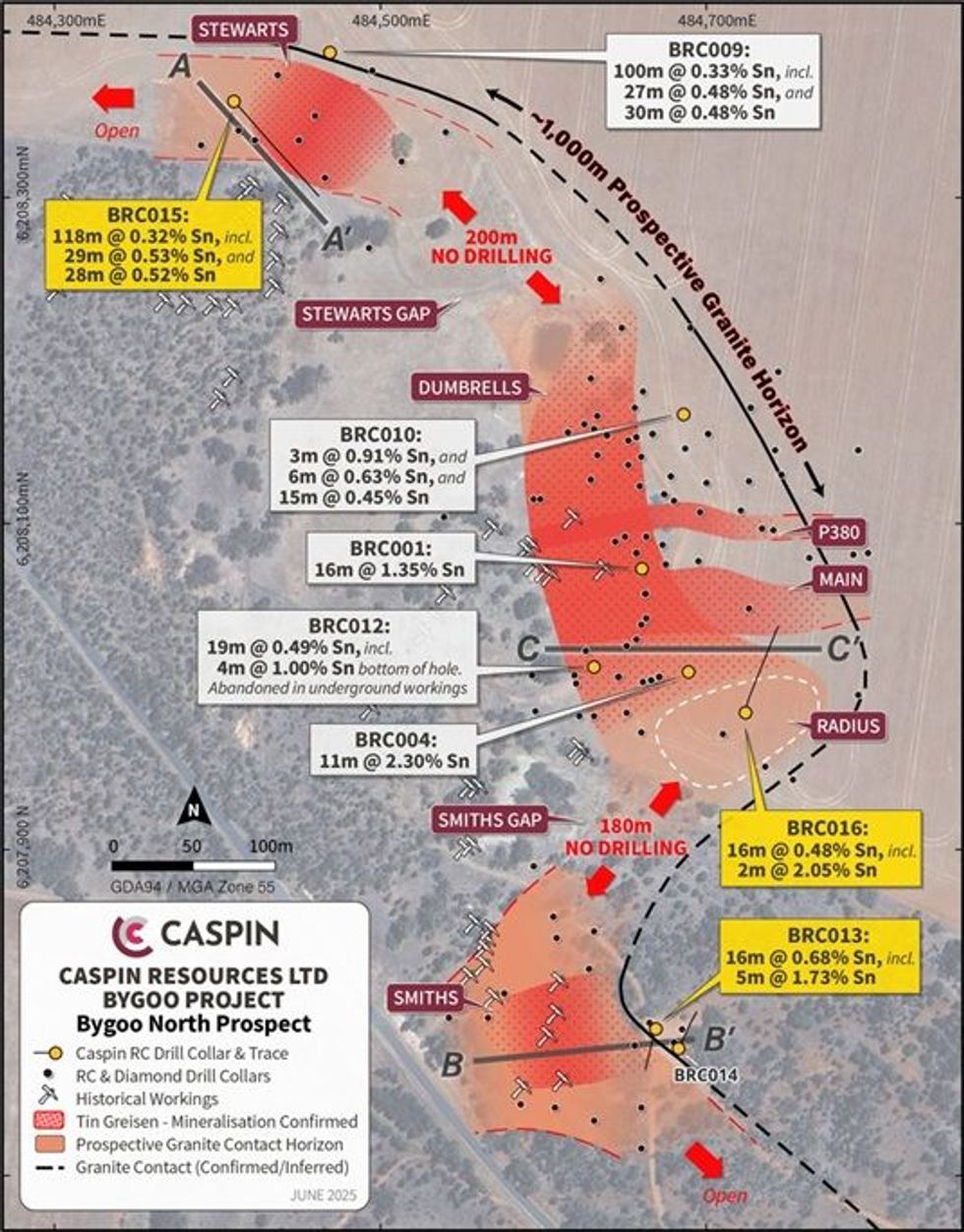
These latest results provide further evidence that mineralisation is constrained only by drilling. There are obvious additional drill targets for further exploration. A planned high-resolution aerial magnetic survey, commencing in the following weeks, will further assist refinement of the geological model and hence the targeting process, particularly the several kilometres of untested granite contact to the north and south.
Click here for the full ASX Release
This article includes content from Caspin Resources, licensed for the purpose of publishing on Investing News Australia. This article does not constitute financial product advice. It is your responsibility to perform proper due diligence before acting upon any information provided here. Please refer to our full disclaimer here.
Keep reading...Show less
Latest News

Sign up to get your FREE
European Lithium Investor Kit
and hear about exciting investment opportunities.
- Corporate info
- Insights
- Growth strategies
- Upcoming projects
GET YOUR FREE INVESTOR KIT
Latest Press Releases
Related News
TOP STOCKS
American Battery4.030.24
Aion Therapeutic0.10-0.01
Cybin Corp2.140.00




